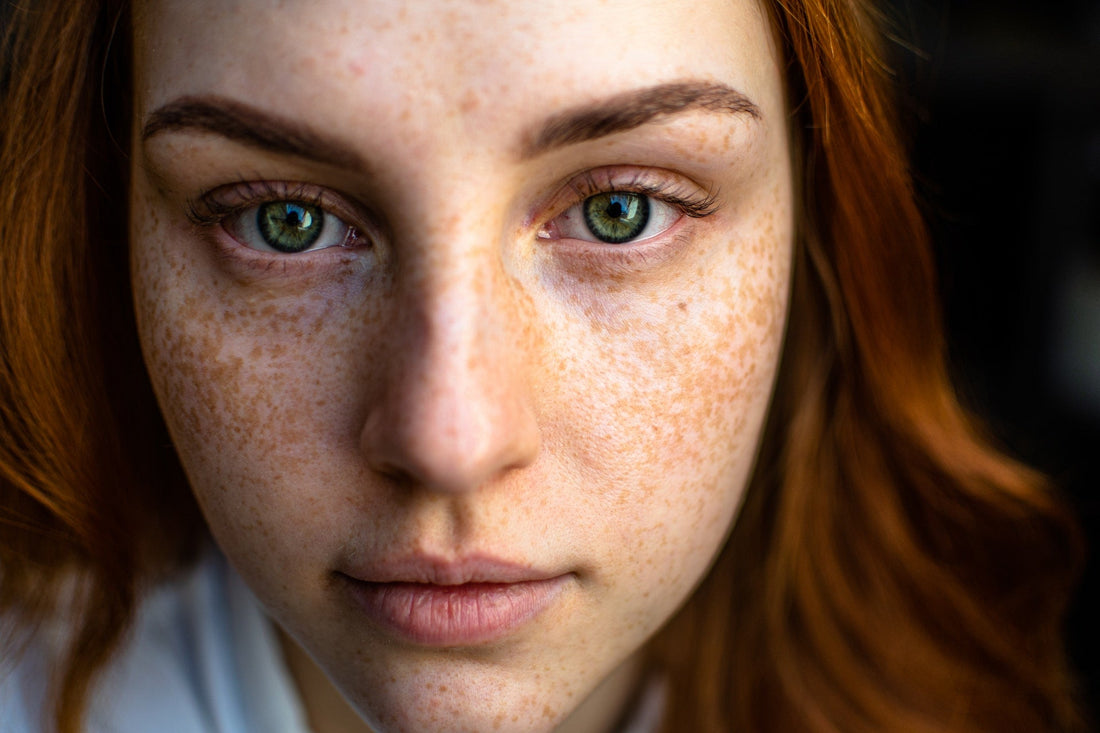
Skin pigmentation: causes, types and effective treatments
What is skin pigmentation?
Skin pigmentation is a problem that many people face, and its occurrence can be caused by various factors. From genetic predispositions to environmental influences, knowing the causes of pigmentation will help us fight the problem more effectively. Let's consider the main factors that can provoke the appearance of pigmentation on the skin.How to avoid skin pigmentation: practical tips
Skin pigmentation can occur under the influence of various factors, and one of the most important is solar radiation. To avoid the appearance of dark spots and maintain an even skin tone, it is important to follow a few simple but effective tips.
1. Avoid prolonged exposure to the sun
Direct sunlight is the main cause of pigmentation, as ultraviolet radiation stimulates the production of melanin, the pigment responsible for skin color. Prolonged exposure to the sun without adequate protection can lead to uneven pigmentation and dark spots, especially on the face, arms and shoulders. Try to avoid being in the sun during the hottest hours of the day (10:00 a.m. to 4:00 p.m.) when UV radiation is strongest.
2. Use a high SPF sunscreen
Sunscreen is the first and most important tool in the fight against skin pigmentation. Regular use of a cream with a high SPF (at least 30, and for prolonged exposure to the sun it is better to choose SPF 50 and higher) will help protect the skin from the harmful effects of ultraviolet rays. Apply sunscreen 15-20 minutes before going outside and reapply regularly every two hours, especially after swimming or excessive sweating. Also, don't forget about the areas that are often forgotten to protect - ears, neck, lips and hands.
3. Wear protective clothing and headgear
Clothing can also become your protective barrier from the sun. For maximum protection against pigmentation, choose light-colored, long-sleeved clothing that reflects sunlight. Modern textile technologies offer special fabrics with ultraviolet protection (UPF), which block up to 98% of UV radiation. In addition to clothing, it is important to wear headgear such as wide-brimmed hats or caps to protect your face and neck from the harmful effects of the sun's rays. Sunglasses are also a necessary accessory as they protect the sensitive skin around the eyes.
4. Use products with antioxidants
In addition to physical protection, the skin needs additional help in combating the effects of the sun. Using products with antioxidants, such as vitamin C, E and ferulic acid, will help neutralize free radicals and reduce the likelihood of pigmentation. These components not only protect the skin, but also help to even out its tone and reduce the appearance of age spots.
Types of skin pigmentation:
- Post-inflammatory hyperpigmentation
- Melasma
- Sun spots
Post-inflammatory hyperpigmentation often occurs after inflammatory processes in the skin, such as acne or acne. Melasma, in turn, is characterized by dark spots that most often appear on the face. Sunspots caused by prolonged exposure to ultraviolet rays also require special attention and protection. Determining the type of pigmentation will help to choose the optimal methods of treatment and prevention.
Effective methods of treatment and prevention of skin pigmentation
Skin pigmentation can be caused by various factors, from solar radiation to changes in the hormonal background. It is important to choose appropriate methods of treatment and prevention in order to preserve the health and beauty of the skin. Here are some effective strategies:- Use of sunscreen: Protection from ultraviolet rays is a key point in the prevention of pigmentation. When choosing a sunscreen, look for a high SPF and apply it to your skin regularly.
- Use of cosmetic procedures: Various procedures such as chemical peels, laser therapy, and phototherapy can help reduce the appearance of pigmentation and improve the overall condition of the skin.
- Using whitening products: Creams, serums, and masks with active whitening ingredients like hydroquinone, retinol, and vitamin C can help reduce hyperpigmentation and restore an even skin tone.
- Maintaining a healthy lifestyle: Eating right, getting enough sleep and minimizing stress can also have a positive effect on the skin, reducing the risk of pigmentation.
The importance of antioxidants in skin care and the fight against hyperpigmentation
Antioxidants play a key role in the fight against hyperpigmentation, as they help protect the skin from the harmful effects of free radicals and environmental factors. Free radicals can provoke the appearance of dark spots and worsen the overall condition of the skin. Including products with antioxidants in your daily skin care routine can significantly reduce the appearance of hyperpigmentation and improve its appearance.
Vitamin C is one of the most powerful antioxidants that actively brightens the skin and evens out its tone. It reduces the production of melanin, which is the main cause of hyperpigmentation. In addition, vitamin C stimulates the production of collagen, making the skin firmer and more even.
Vitamin E is also an important element in the fight against hyperpigmentation, as it protects the skin from damage caused by UV rays and air pollution. This antioxidant helps regenerate the skin and supports its natural barrier, preventing the formation of new pigment spots.
Ferulic acid enhances the effects of other antioxidants such as vitamin C and E. It helps fight hyperpigmentation by protecting the skin from oxidative stress that can cause dark spots. Using products with ferulic acid can significantly improve the overall condition of the skin and make its tone more even.
Protection against hyperpigmentation is possible thanks to the regular use of products containing antioxidants. Their effect on the skin helps to reduce the risk of age spots and maintain its healthy appearance.
Age-related skin pigmentation: causes and factors
With age, many people are faced with the appearance of skin pigmentation, especially in the form of so-called age spots or leitilgo. The main reason for this phenomenon is a decrease in the level of collagen production and the accumulation of exposure to ultraviolet rays throughout life. Aging skin becomes more vulnerable to external factors, which provokes the appearance of dark spots.
Hyperpigmentation and UV exposure
The appearance of hyperpigmentation is often associated with excessive exposure to solar radiation. Throughout our life, our skin is exposed to ultraviolet rays, which stimulates the production of melanin. Over time, this leads to the appearance of uneven skin color, age spots and dark areas. Using sunscreen is a key method of preventing skin hyperpigmentation.
Age-related skin changes and hyperpigmentation
In addition to exposure to the sun, natural aging processes also contribute to the development of hyperpigmentation. With age, the skin's ability to regenerate decreases, which makes dark spots more visible. Natural protection against free radicals is also lost, which provokes even more damage to skin cells.
How to prevent age-related skin pigmentation
Age-related pigmentation can be prevented with regular skin care and the use of antioxidant products. Sunscreens with a high SPF, wearing protective clothing and hats will help minimize UV exposure. It is also important to use cosmetics with antioxidants and whitening ingredients such as vitamin C and retinol to reduce existing blemishes.
A solution to combat age-related hyperpigmentation
For those who already face age-related hyperpigmentation, it is important to choose the right care. Using products with active ingredients that even out skin tone will help reduce the appearance of pigmentation. In addition, regular visits to the beautician and procedures such as chemical peels or laser therapy can also be effective in the fight against age spots.
Conclusion
Skin pigmentation is a common problem that can occur for a variety of reasons, including UV exposure, age-related changes, and hormonal fluctuations. However, with proper care and preventive measures, such as regular use of sunscreens, antioxidants, and whitening ingredients, the appearance of pigmentation can be significantly reduced. It is important to remember the constant protection of the skin, especially in adulthood, and not to neglect the professional advice of a dermatologist to choose the optimal methods of treatment and prevention of hyperpigmentation.










